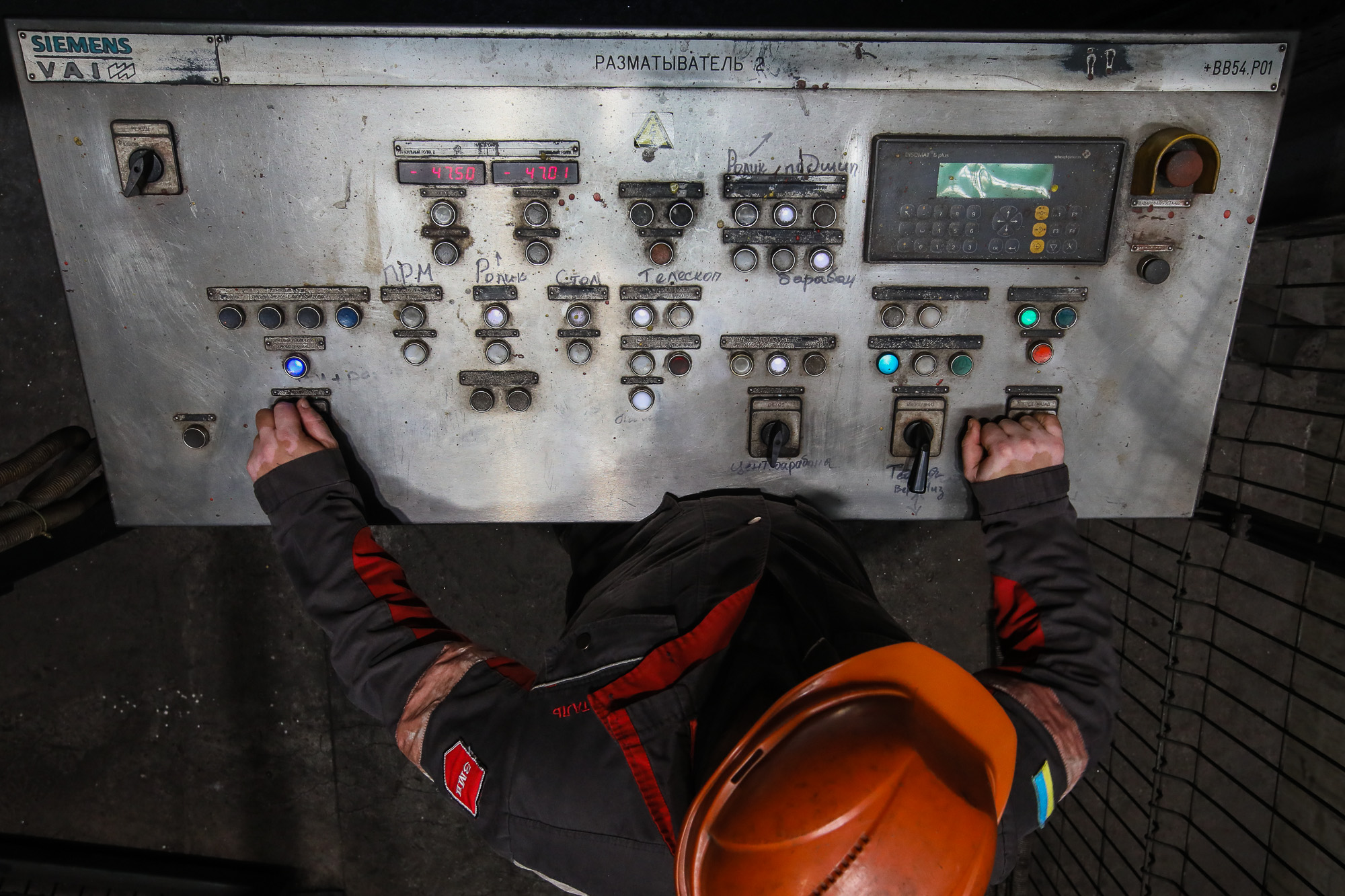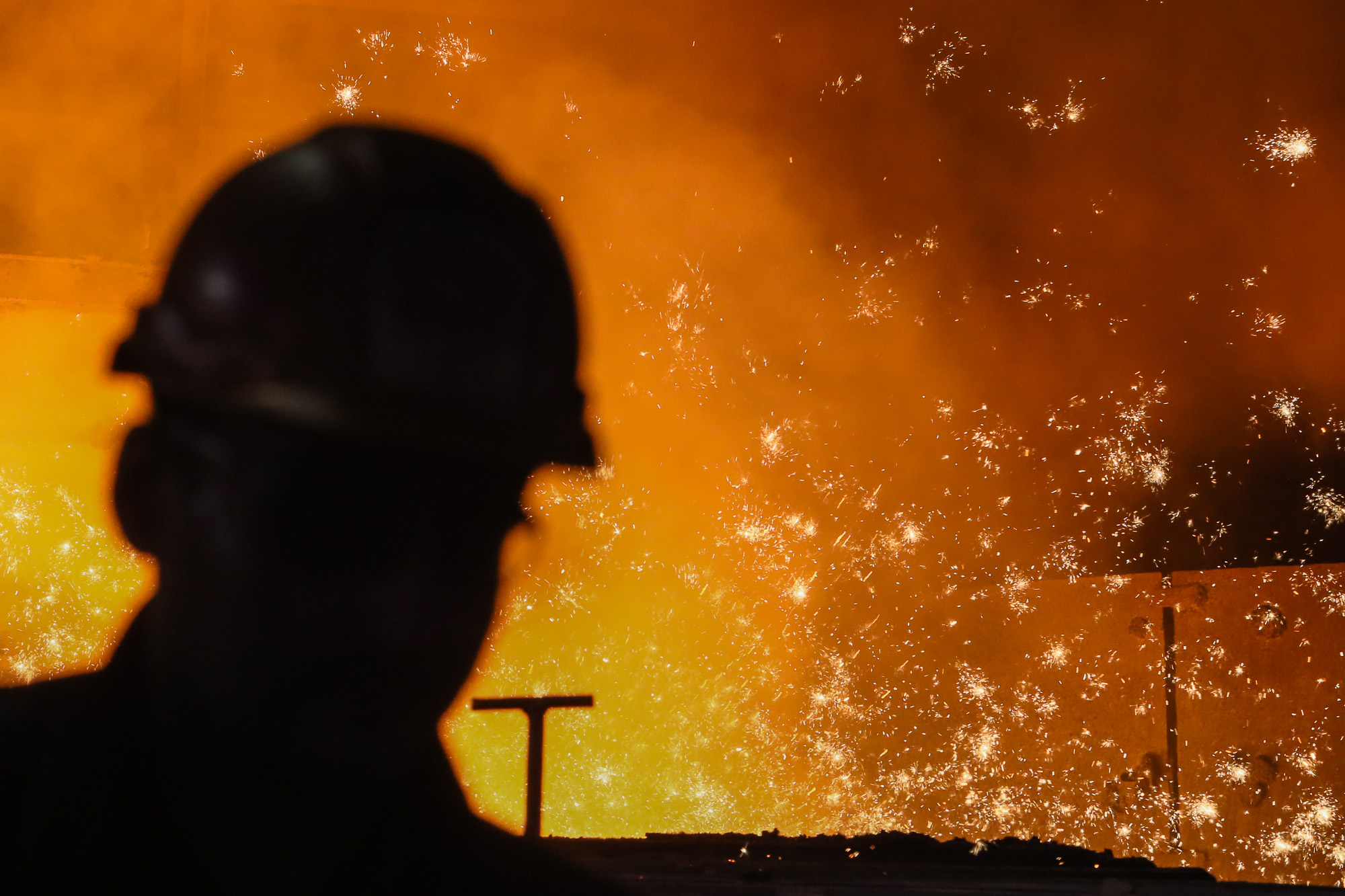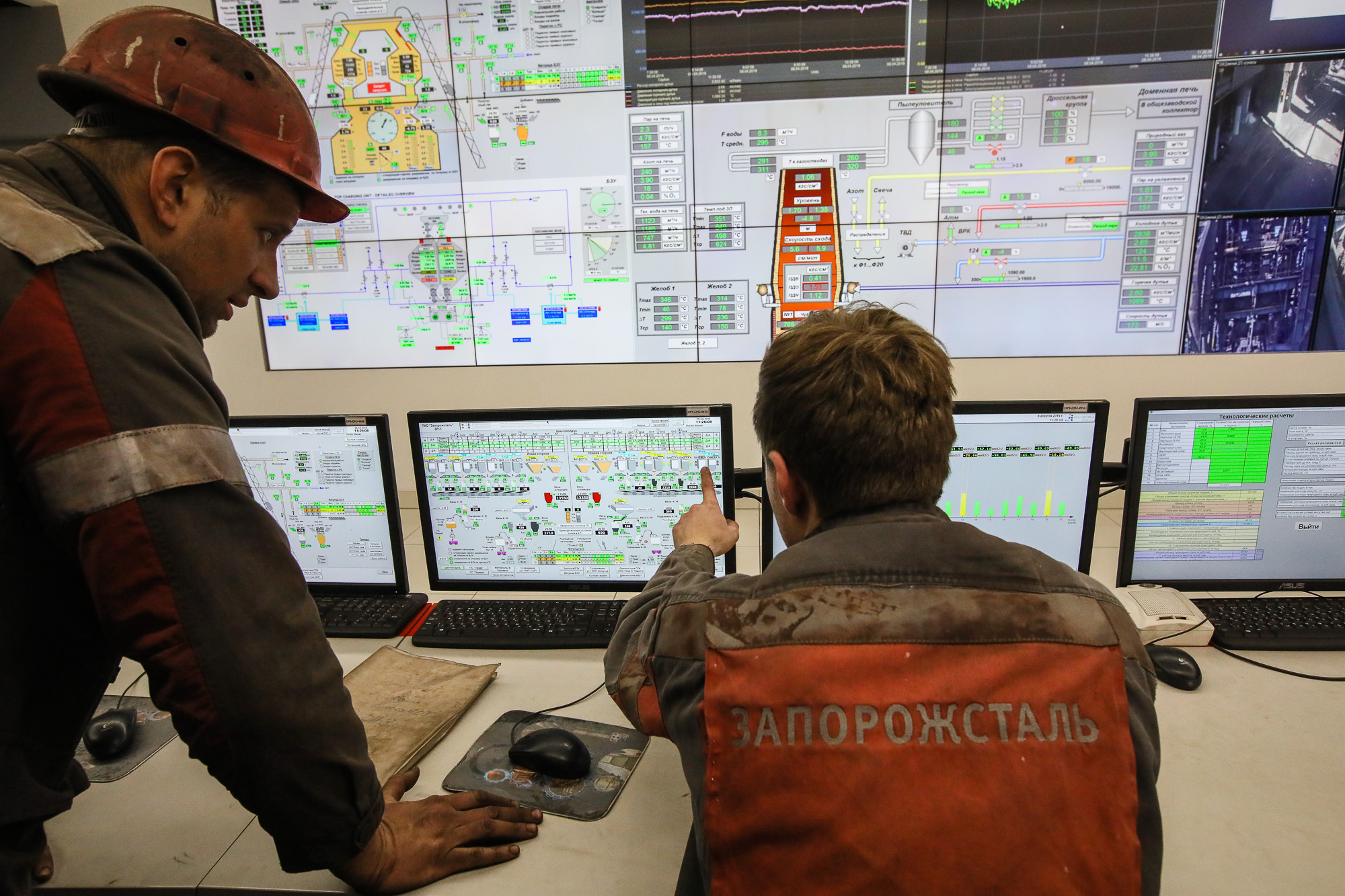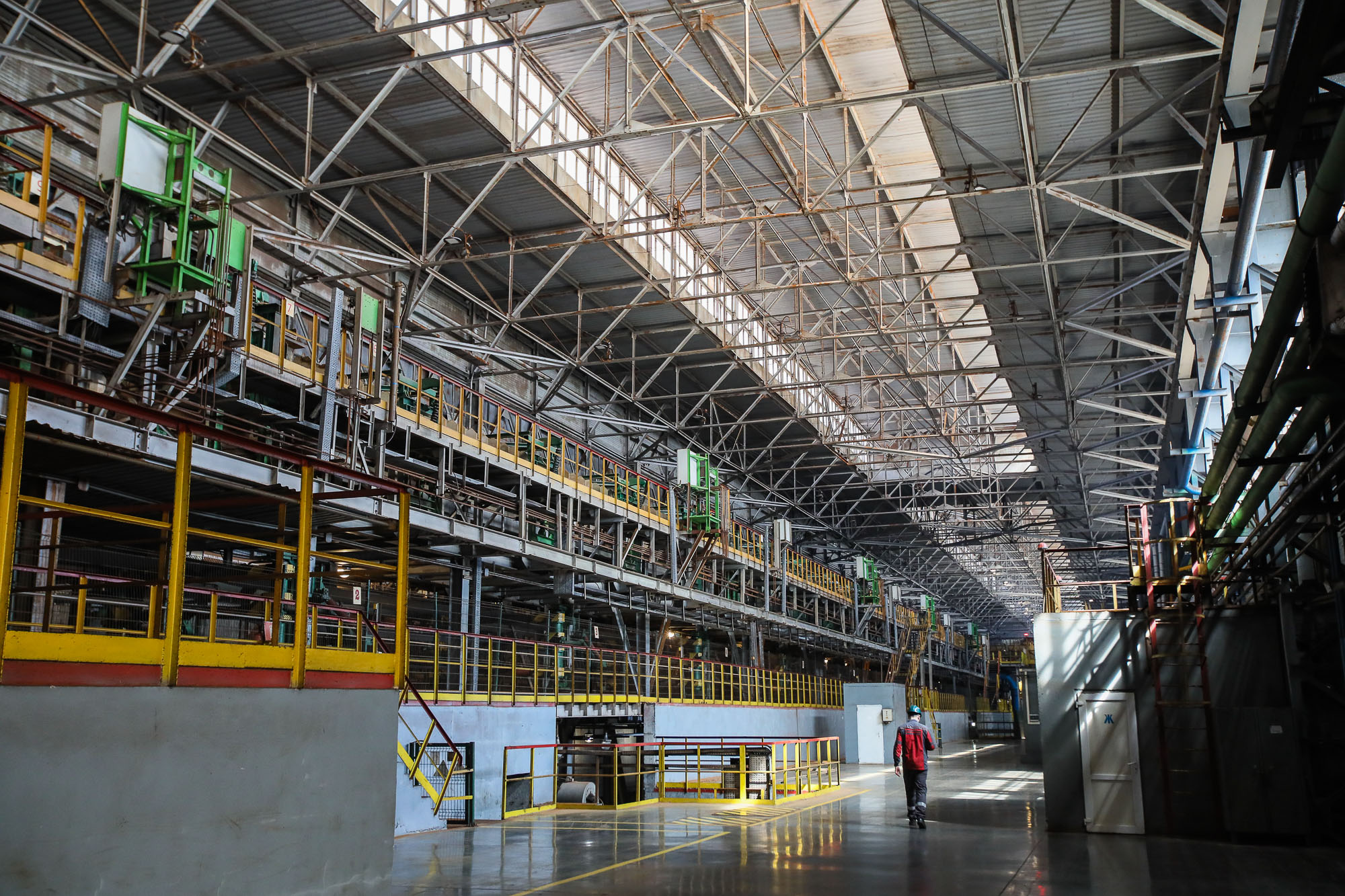ZAPORIZHIA, Ukraine – Passing within 10 meters of a lava-like river of boiling steel — heated to over 1,300 degrees Celsius — one starts to perspire heavily. The iron dust that hangs in the air clings to one’s sweaty face.
And yet there are people who work here eight hours every day, just a meter away from this deadly hot molten metal. They breathe in the dust and long to wash it off their face. It’s all part of the job for a steelmaker.
Jobs at Zaporizhstal are well-paid, and much-sought-after in Zaporizhia, a city of nearly 800,000 people located 600 kilometers southeast of Kyiv. The mill employs 16,000 people, and many local families have male relatives who either work at the mill now, or used to work there.
While not every worker has to come close to hot steel, the process of casting it is perilous at every stage. But the average salary at the mill outweighs the danger — $700 per month, which is at least twice the average wage in the city.
The mill is immense, occupying seven square kilometers of central Zaporizhia. Locals call it “the steel jungle.”
“It’s a city in the city,” says Aleksey Lebedev, the director of construction and investment at the plant, and a long-term manager at enterprises that — like Zaporizhstal itself — belong to oligarch Rinat Akhmetov, the richest person in Ukraine. His SCM Holdings owns Metinvest, the company that owns the plant.
“It’s like a living organism,” Lebedev continues.
Zaporizhstal has four 90-meter furnaces that work round-the-clock. This “organism” produces 9,000 tons of metal every day. To put that in perspective — an average car weighs around one ton.
Zaporizhstal makes three types of metal: cold-rolled steel sheets (used for making cars), cast iron and steel (both used for making buildings and bridges). The mill made $200 million in net profits from selling its products in 2018, according to Metinvest.
“There’s metal in everything around us,” Lebedev says. “We use cars, trolleybuses, and buses that are made of metal. We walk on bridges and live in buildings that have metal skeletons. The raw material for them is the rolled steel that we and others make.”
The mill’s parent company Metinvest boasts that its steel, including metal from Zaporizhstal, was used to build London’s tallest building, The Shard; the Turkish tanker Esra; Ukraine’s Darnitsky Bridge and Olimpiyskiy Stadium in Kyiv.
“But in general,” Lebedev says, “these (products) don’t have recognizable brands. It’s a very specific market, unknown to the majority.”
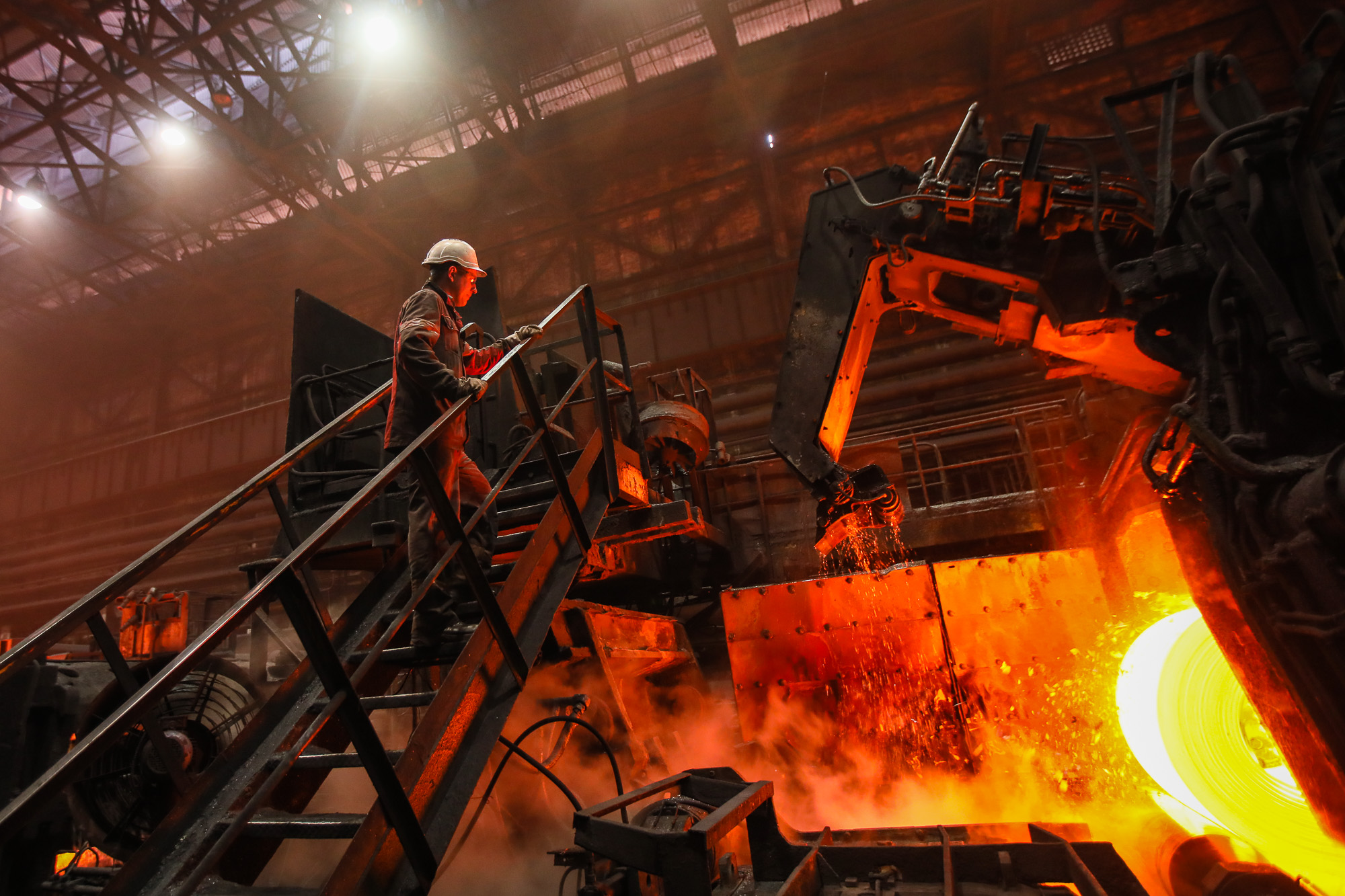
A man checks how the molten metal is being turned into thin sheets at steel mill Zaporizhstal in Zaporizhia on April 8, 2019. (Volodymyr Petrov)
Selling metal abroad
The mill doesn’t store any of the metal it makes, so everything must go to the local port and be shipped to customers.
And in Ukraine, Zaporizhstal has only two big customers: Akhmetov’s own Unisteel and oligarch Victor Pinchuk’s Interpipe Group. Lebedev thinks that the fact that the mill has so few local clients shows Ukraine’s economy is in tatters.
“We live in a country that is forced to export almost everything,” he says. About 80 percent of the mill’s product goes abroad.
The metal is ordered 2–3 months in advance. The best buyers are Italy, Poland, Bulgaria, Turkey, and North Africa. According to Lebedev, Europe is the most lucrative market.
The plant, however, also sells metal even when it’s unprofitable — for example, to Asia. Shipping metal to the Asian countries is expensive, but “it’s more expensive to stop the furnaces,” says Lebedev.
Surprisingly, 5–10 percent of the mills exports still goes to Russia. This, however, is a lot less than in the years prior to 2014, before Russia annexed the Crimean peninsula and launched its war on Ukraine in the Donbas. Before that, its share was 25 percent.
“We’re closing our market to Russia, and Russia is closing its market to us,” Lebedev says, adding that the mill’s former share of the Russian market is now mostly taken by “their own steelmakers.”
Despite the war, Zaporizhstal’s management openly supports Ukraine’s pro-Russian political party, the Opposition Bloc. The premises of the mill display posters of Oleksandr Vilkul, the head of the Opposition Bloc faction in parliament. Zaporizhstal CEO Rostislav Shurma is the chairman of the Opposition Bloc in Zaporizhia Oblast. Shurma refused to comment for this story, saying he was busy.
Lebedev, in turn, is careful about stating his political views, saying that during the first round of the presidential election on March 31 he was away and couldn’t vote.
Almost 40 percent of Zaporizhia Oblast voted for television presenter, comedian and presidential candidate Volodymyr Zelenskiy. Pro-Russian politicians Yuriy Boyko and Vilkul took second and third place with 19 and 10 percent of the vote, respectively.
Nationally, however, neither of the pro-Russian candidates had enough support to make it to the second round of the election on April 21.
Ecological disaster
As the third largest steel maker in Ukraine, the 85-year-old Zaporizhstal mill paid $150,000 in taxes in 2018, with $26,000 of that going to the budget of its host city. But locals also pay a big price for the mill’s operations in terms of their health.
The Ministry of Ecology ranks Zaporizhstal as the country’s 6th largest water polluter and its 10th largest air polluter. The oblast center itself is the 13th most contaminated city in Ukraine, while the capital Kyiv is 6th, according to Ukraine’s Central Geophysical Observatory.
Most of the plant’s pollution comes from making ingredients for sinter, the raw material used to product cast iron. This process creates large amounts of dust and pollutes the air. The plant also sucks water from the Dnipro River to cool hot steel, and the used water goes back to the river, contaminating it.
“Yes, we’re damaging the environment the most in this city,” Lebedev says, adding that the plant is attempting to improve the situation by investing in modernization. It has invested $375,000 over the last 6 years, and has budgeted $60,000 for 2019. One innovation is to collect rainwater, instead of river water, for use in some parts of the production process.
But that’s not enough, Lebedev admits. The mill needs several billions of dollars now to modernize “quicker and more effectively,” he says.
The best loan interest rate in the national currency, the hryvnia, is about 20 percent nowadays, while in dollars it’s around 10 percent. Meanwhile, the mill’s European rivals can access 2-percent loans in euros, according to the executive.
“We Ukrainians have got visa-free regime all right, and yes, our market is now packed with European products,” Lebedev says. “But enterprises like ours, we haven’t gained anything positive.”
“It’s impossible to be well-off when everything around you is bad,” he continues. “But given the conditions we live in today, I reckon Zaporizhstal is doing OK.”
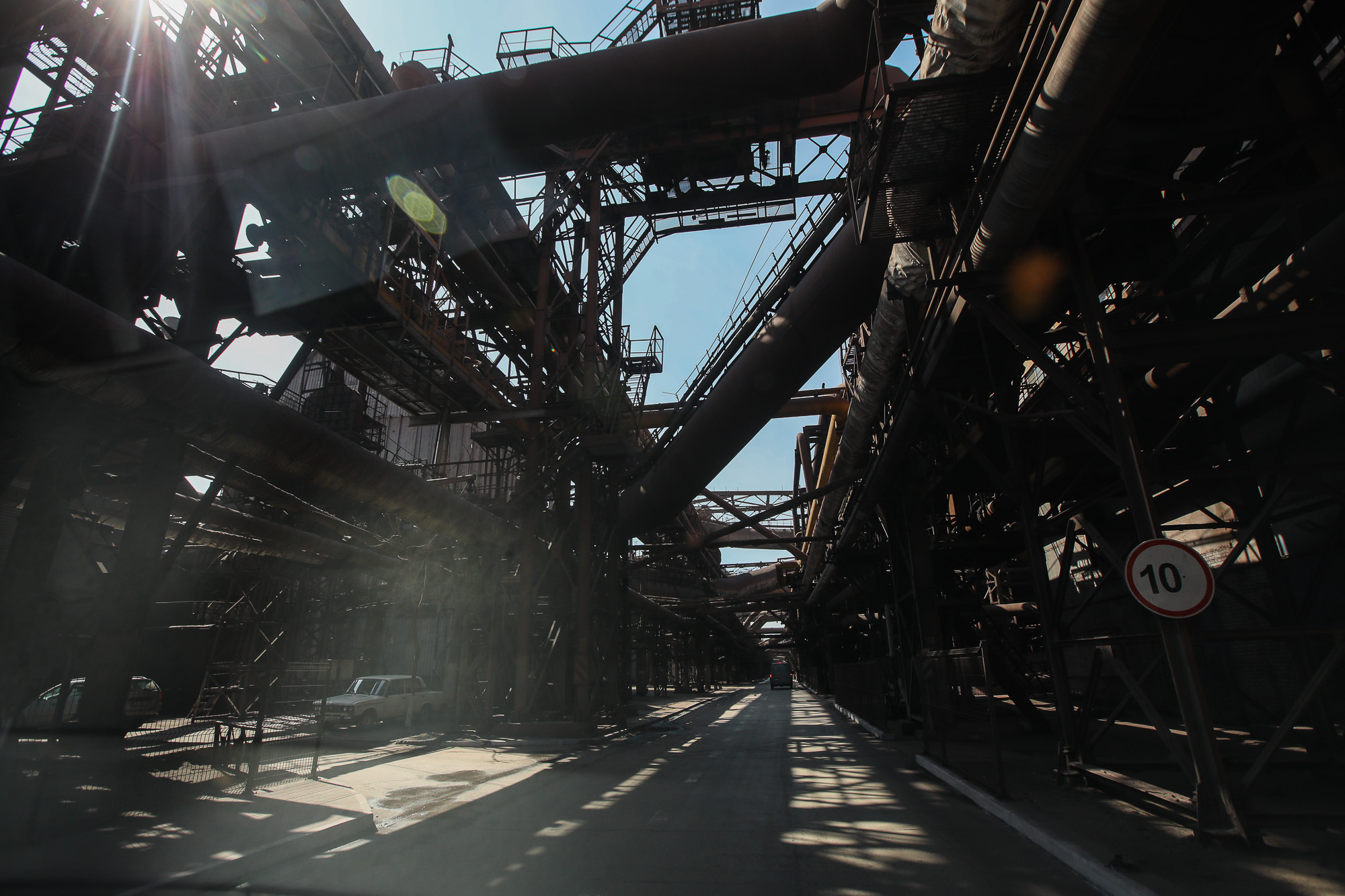
The Zaporizhstal steel mill is immense, occupying seven square kilometers of central Zaporizhia. Locals call it “the steel jungle.” (Volodymyr Petrov)

